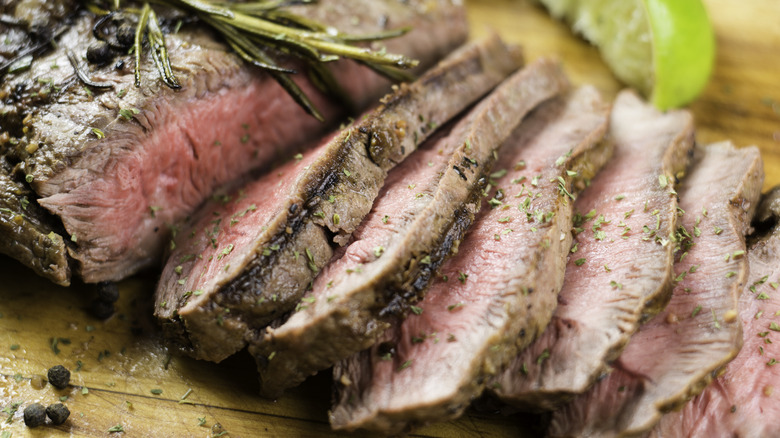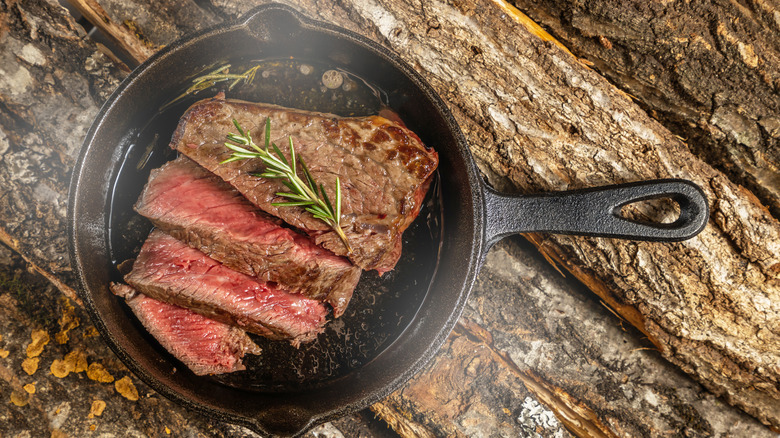Why London Broil Is A Great Match For Rare Steak Lovers
The term London Broil is something of a misnomer. This cut of meat neither comes from London, nor does it necessarily have to be broiled. In fact, London Broil can refer to almost any lean, muscular cut taken from the round, or leg, of the cattle. This includes flank steak and flat iron steak. A London Broil cut from the top round of beef — that is, the upper part of the rump — will often have great flavor, and be exceedingly tender. These characteristics are what make the cut a great option for anyone who enjoys their meat on the rare side.
As the cut is taken from some of the animal's most active muscles, London Broil cuts tend to have little to no fat. This leanness means that there is a very slim window between tender and tough. A London Broil should always be cooked rare to medium rare; because there is so little fat to render, if you cook this steak for too long the meat will become tough and chewy, the exact opposite of what you want in a steak.
There are a few simple steps you can take to ensure a tender and juicy London Broil. All you need is patience and a good cast iron skillet. Oh, and for those of you out there who like your steak cooked above medium rare, you need not heed the following advice.
How to cook a rare London Broil
Start your London Broil success journey by marinating the steak for a minimum of four hours or up to overnight. The marinade will add moisture and flavor, while also tenderizing the meat. And when it comes time for cooking, you want as tender a steak as you can get. If you're not one for marinade, bring the steak up to room temperature and salt it before cooking.
To cook the steak, follow the rule of high heat for a short period of time. This could be achieved via broiling, grilling, or cast iron. The latter is a great, efficient way to cook your London Broil. Sear the meat on both sides, and check the internal temperature with a meat thermometer. When it reaches 130 degrees Fahrenheit (medium rare), remove the steak from the pan, cover it in aluminum foil, and let it rest.
You need to rest your London Broil for at least 10 minutes before serving. Resting the meat allows it to finish cooking, but also for the muscles to relax and release any juices. The juices are then reabsorbed back into the meat. What you're left with is a tender, juicy steak with a warm, pink center. Remember to cut against the grain for nice, even strips. While it may be tempting, don't devour the whole thing too quickly: A great steak is best when savored and shared with friends.

